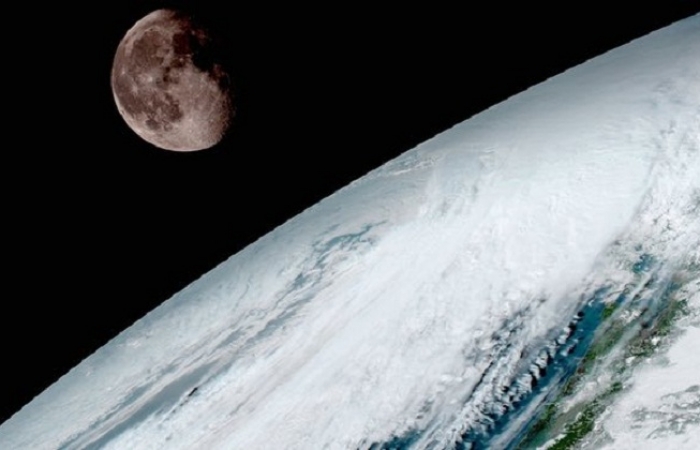Musk said the circumlunar journey would take about a week, nearing the moon’s surface without landing on it before its return to Earth. The total flight would go about 300,000 to 400,000 miles into space, he said, meaning the flight could take humans farther into space than ever before.
If SpaceX accomplishes the trip before Nasa or another space agency can send astronauts to the moon, it would be the first lunar mission with humans in 45 years, on a course that would extend past the record 249,000 miles traveled by the Apollo 13 astronauts in 1970.
SpaceX said in a statement that the would-be passengers “have already paid a significant deposit to do a moon mission”, and Musk called the cost “comparable” to that of sending astronauts to the International Space Station. Nasa currently pays Russia’s space agency, Roscosmos, about $70m a person to fly astronauts to the ISS.
“Other flight teams have also expressed strong interest and we expect more to follow,” the company statement read. “Additional information will be released about the flight teams, contingent upon their approval and confirmation of the health and fitness test results.”
The flight would rely on SpaceX’s Falcon Heavy rocket, the massive engine that the company hopes to test for the first time this summer, and a Dragon 2 capsule Musk said that the capsule had a “quite high” success rate for missions so far.
The passengers were “nobody from Hollywood”, Musk said.
He acknowledged that the flight would be dangerous but said the customers have “their eyes open” about what could happen. “We’re doing everything we can to minimize that risk, but it’s not zero,” Musk said.
“We would expect to do more than one mission of this nature,” he added.
While Nasa has contracted SpaceX to launch crewed missions to the International SpaceStation, the company has not yet flown any missions with humans. Musk said the space agency would receive priority if it decided to do another lunar mission first, and that the private trip would need a license with the Federal Aviation Administration. Nasa’s acting administrator, Robert Lightfoot, has said that the agency is reviewing a possible return to the moon or a flight into deep space beyond it.
The company will test its Crew Dragon spacecraft without humans on board later this mission and is scheduled to fly a crewed mission to the space station in 2018.
In its 15-year history, SpaceX and its founder have accrued a steady record of ambitious goals and blown deadlines. In 2011, Musk said that SpaceX would “be ready to fly its first manned mission in 2014”. That same year, he told the Wall Street Journal that he hoped to take humans to Mars by 2021 in a “best case” scenario, an estimate that he pushed back to 2024 last year. And though SpaceX has launched and landed eight reusable rockets, it has also suffered setbacks of failed landings and last year’s launchpad explosion that destroyed the expensive rocket and its satellite payload.
Earlier this month, the Government Accountability Office warned of safety concerns in a review of SpaceX’s rockets and plans, suggesting that there are more delays ahead. The report noted that both SpaceX and another private contractor, United Launch Alliance, have consistently failed to meet deadlines.
Musk remained optimistic on the call, saying, “Next year is going to be the big year for carrying people.”
In a statement, Nasa said it “commends its industry partners for reaching higher”.
“We will work closely with SpaceX to ensure it safely meets the contractual obligations to return the launch of astronauts to US soil and continue to successfully deliver supplies to the International Space Station,” the agency said.
The company currently flies cargo missions to the ISS in a Dragon capsule, and successfully launched and landed its eighth reusable Falcon 9 rocket, part of a fleet that Musk hopes will help usher in an era of easier, relatively cheap space travel.
In its statement, SpaceX said that Nasa has encouraged privately crewed missions, saying that through them “long-term costs to the government decline and more flight reliability history is gained, benefiting both government and private missions”.
Only after crewed missions have begun for Nasa, SpaceX said, will the company launch its mission around the moon, from the Cape Canaveral launchpad used by the Apollo program. “This presents an opportunity for humans to return to deep space for the first time in 45 years and they will travel faster and further into the Solar System than any before them,” the company said.
Rival spaceflight company Blue Origins, headed by Amazon CEO Jeff Bezos, has also announced plans to eventually take people and cargo to low-Earth orbit with its own reusable rockets. In 2001, billionaire Dennis Tito became the world’s first space tourist for an estimated $20m, booking a trip on a Russian Soyuz spacecraft to the International Space Station, and about half a dozen others followed him into orbit.
/Guardian/
More about:
















































